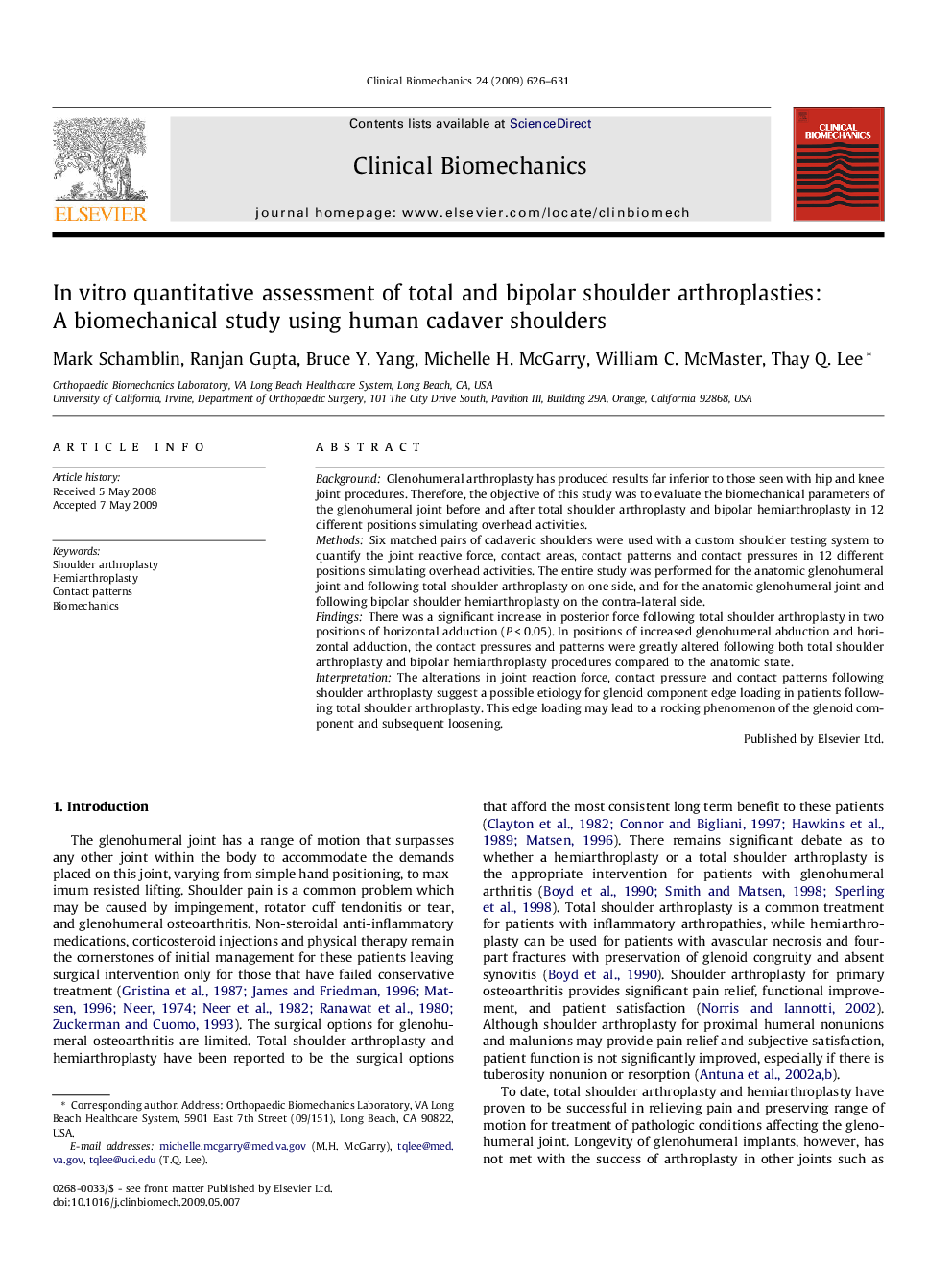| Article ID | Journal | Published Year | Pages | File Type |
|---|---|---|---|---|
| 4051237 | Clinical Biomechanics | 2009 | 6 Pages |
BackgroundGlenohumeral arthroplasty has produced results far inferior to those seen with hip and knee joint procedures. Therefore, the objective of this study was to evaluate the biomechanical parameters of the glenohumeral joint before and after total shoulder arthroplasty and bipolar hemiarthroplasty in 12 different positions simulating overhead activities.MethodsSix matched pairs of cadaveric shoulders were used with a custom shoulder testing system to quantify the joint reactive force, contact areas, contact patterns and contact pressures in 12 different positions simulating overhead activities. The entire study was performed for the anatomic glenohumeral joint and following total shoulder arthroplasty on one side, and for the anatomic glenohumeral joint and following bipolar shoulder hemiarthroplasty on the contra-lateral side.FindingsThere was a significant increase in posterior force following total shoulder arthroplasty in two positions of horizontal adduction (P < 0.05). In positions of increased glenohumeral abduction and horizontal adduction, the contact pressures and patterns were greatly altered following both total shoulder arthroplasty and bipolar hemiarthroplasty procedures compared to the anatomic state.InterpretationThe alterations in joint reaction force, contact pressure and contact patterns following shoulder arthroplasty suggest a possible etiology for glenoid component edge loading in patients following total shoulder arthroplasty. This edge loading may lead to a rocking phenomenon of the glenoid component and subsequent loosening.
